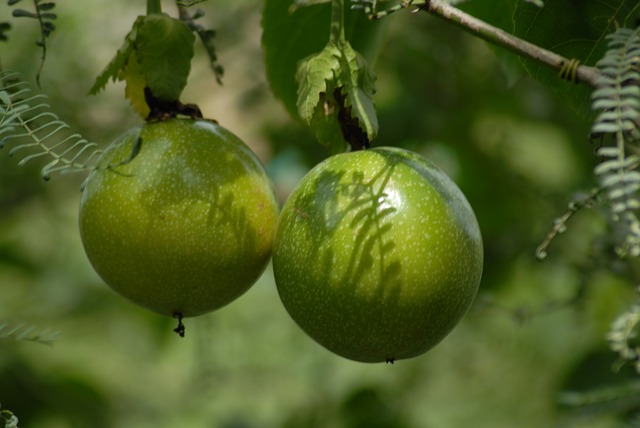Estimación del rendimiento del cultivo de Passiflora Edulis (Maracuyá) a partir de modelos estadísticos
Article Sidebar

How to Cite
Altmetrics
Article Details
Se solicita a los autores que diligencien el documento de cesión de derechos de autor sobre el artículo, para que sea posible su edición, publicación y distribución en cualquier medio y modalidad: medios electrónicos, CD ROM, impresos o cualquier otra forma, con fines exclusivamente científicos, educativos y culturales
- La obra pertenece a UNIMINUTO.
- Dada la naturaleza de UNIMINUTO como Institución de Educación Superior, con un modelo universitario innovador para ofrecer Educación de alta calidad, de fácil acceso, integral y flexible; para formar profesionales altamente competentes, éticamente responsables y líderes de procesos de transformación social, EL CEDENTE ha decidido ceder los derechos patrimoniales de su OBRA, que adelante se detalla para que sea explotado por ésta
- El querer de EL CEDENTE es ceder a título gratuito los derechos patrimoniales de la OBRA a UNIMINUTO con fines académicos.
Main Article Content
Abstract
Crop planning needs tools to support to making decision to establish its economic and environmental sustainability, as proposed this article presents a statistical analysis for historical data from 2007 to 2014 of the independent agroclimatic variables of the station code 21055020, located in the coordinate latitude 2,378 and length -75,89 municipality of La Plata, Huila, Colombia. Objective estimates a performance forecast using two mathematical models ARIMA and Multiple Regression. These are recommended in the literature. Finally, the results are compared to understand the system and establish their interactions, as support for decision making. The crop selected for the analysis is Passion Fruit (Passiflora Edulis) This crop has an impact economic and social for farmers in the area. The Multiple Regression Model underestimates the peaks of higher performance, besides the adjustment of the model is very low, which implies that this model is descriptive and not predictive while the ARIMA model is recommended given its adjustment to the time series analyzed for this study.
References
[2] N. Kantanantha, "Crop decision planning under yield and price uncertainties", Ph.D. tesis, H. Milton Stewart Sch. of Ind. and Sys. Eng. Georgia Inst. of Tech., Georgia, Estados Unidos, 2007.
[3] O. Delgadillo-Ruiz, P. P. Ramírez-Moreno, J. A. Leos-Rodríguez, J. M. Salas González y R. D. Valdez-Cepeda, "Pronósticos y series de tiempo de rendimientos de granos básicos en México", Acta Univ., vol. 26, no. 3, pp. 23-32, 2016.
[4] J. Ruiz-Ramírez, G. E. Hernández Rodríguez y R. Zuleta-Rodríguez,, "Análisis de series de tiempo en el pronóstico de la producción de caña de azúcar", Terra Latin. vol. 29, no. 1. 2011. [En línea]. Disponible en: http://www.scielo.org.mx/scielo.php?script=sci_arttext&pid=S0187-57792011000100103.
[5] C. Martínez Ventura, "Pronósticos de producción agrícola", Archivos de Eco., abr. 2006.
[6] R. D. Kusumastuti, D. P. Van Donk, y R. Teunter, "Crop-related harvesting and processing planning: A review", Int. J. Prod. Econ., vol. 174, pp. 76-92, 2016.
[7] O. Musshoff y N. Hirschauer, "What benefits are to be derived from improved farm program planning approaches? – The role of time series models and stochastic optimization", Agric. Syst., vol. 95, no. 1-3, pp. 11-27, Dic. 2007.
[8] C. Martínez Ventura, «Pronósticos de producción agrícola», Departamento Nacional de Planeación; DNP, 2006.
[9] T. H. Hengl, A Practical Guide to Geostatistical Mapping. Luxemburgo: Office for Official Publications of the European Communities, 2009.
[10] T. Hengl, G. B. M. Heuvelink, y D. G. Rossiter, "About regression-kriging: From equations to case studies", Comput. Geosci., vol. 33, no. 10, pp. 1301-1315, Oct. 2007.
[11] D. Derryberry, Basic data analysis for time series with R, John Wiley & Sons, 2014.
[12] R. Dalinina, "Introduction to Forecasting with ARIMA in R". [En línea]. Disponible en: https://www.datascience.com/blog/introduction-to-forecasting-with-arima-in-r-learn-data-science-tutorials.
[13] D. Jackson., N.E. Looney, y M. Morley-Bunker,Temperate and subtropical fruit production, Inglaterra, CABI, 2011.
[14] D. J. Pannell, B. Malcolm, y R. S. Kingwell, "Are we risking too much? Perspectives on risk in farm modelling", Agric. Econ., vol. 23, no. 1, pp. 69-78, 2000.
[15] G. Moschini y D. A. Hennessy, "Uncertainty, risk aversion, and risk management for agricultural producers", Handbook of Agri. Econ., vol. 1,pp. 88-153 2001.
[16] G. E. P. Box, G. M. Jenkins, G. C. Reinsel, y G. C. Ljung, Time Series Analysis: Forecasting and Control, 5.a ed. Nueva York, NY: John Wiley & Sons, 2015.
[17] A. V. Metcalfe y P. S. P. Cowpertwait, Introductory Time Series with R. Nueva York, NY: Springer New York, 2009.
[18] D. Montgomery, Vining, G. G. y E. A. Peck, Introducción al análisis de regresión lineal, México: Limusa Wiley, 2006.
[19] R. Shumway y D.S. Stoffer, Time series regression and exploratory data analysis, Springer,2006.
[20] J. D. Cryer y K.-S. Chan, Time Series Analysis. Nueva York, NY: Springer New York, 2008.
[21] "R: The R Project for Statistical Computing". [En línea]. Disponible en: https://www.r-project.org/.
[22] R. J. Hyndman y Y. Khandakar, "Automatic Time Series Forecasting: The forecast Package for R", J. Stat. Softw., vol. 27, no. 3, 2008.
Most read articles by the same author(s)
- Edna Yulieth Ramos Reyes, Juan Sebastian Villamizar Bernal, Leila Nayibe Ramirez Castañeda, Descriptive analysis of logistics costs of urban food distribution in the 13th Street corridor , INVENTUM: Vol. 17 No. 33 (2022): JULIO-DICIEMBRE
- Leila Nayibe Ramírez Castañeda, Carmen Vanesa Dimas, Cesar Augusto Reyes, Methodology for implementing a collaborative planning, forecasting and replenishment (CPFR) model in a pharmaceutical laboratory in the health sector , INVENTUM: Vol. 16 No. 31 (2021): JULIO-DICIEMBRE
- Rafael Antonio Acosta Rodríguez, Leila Nayibe Ramírez Castañeda, Urban agriculture alternatives as a response to University Social Responsibility. A literature review , INVENTUM: Vol. 18 No. 35 (2023): JULIO - DICIEMBRE




